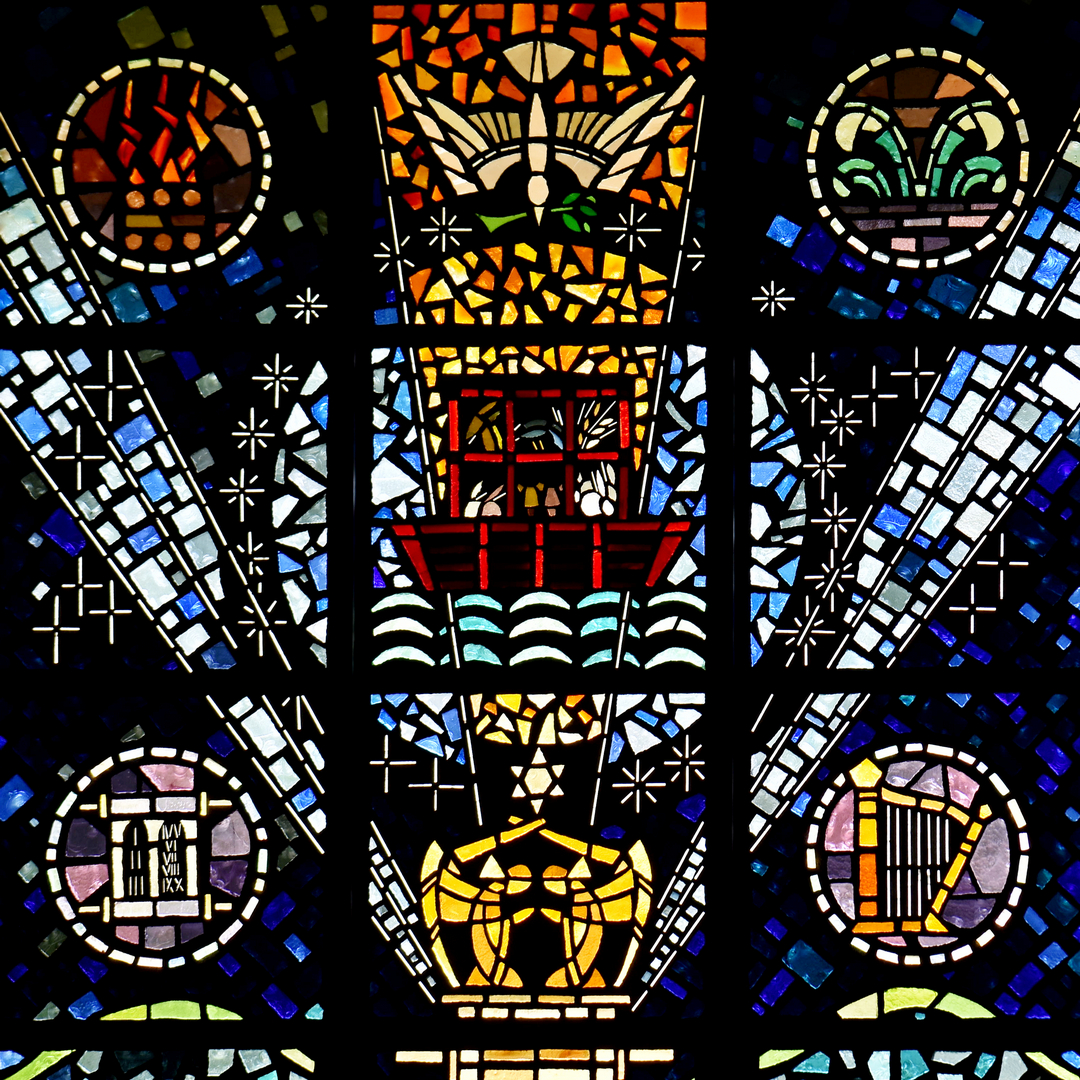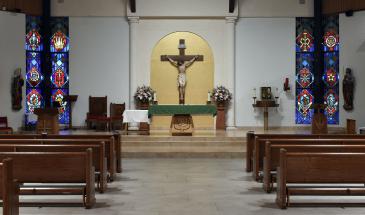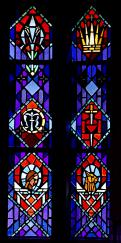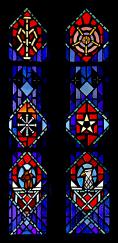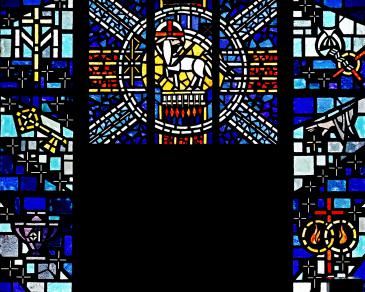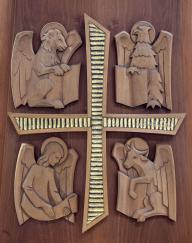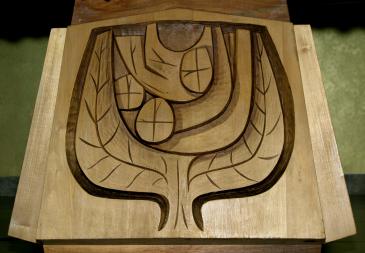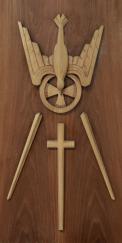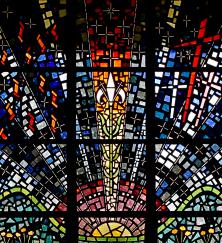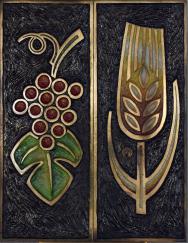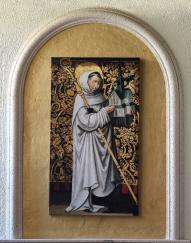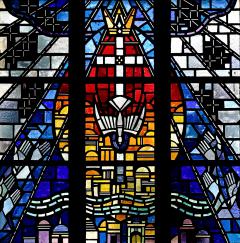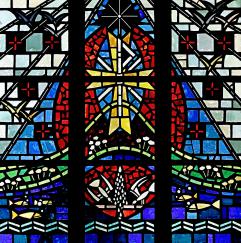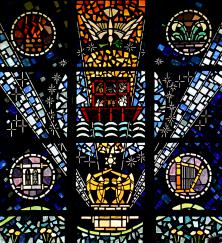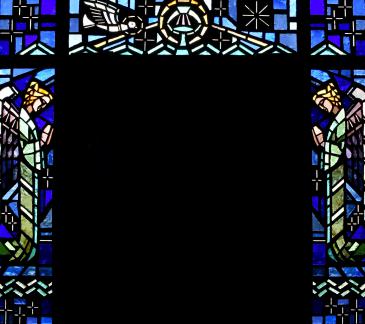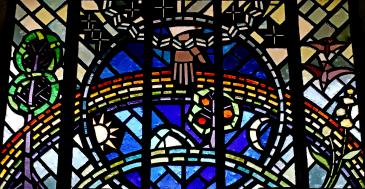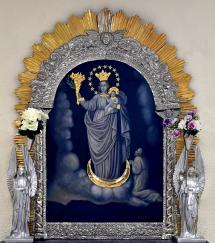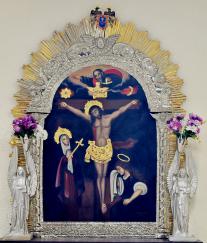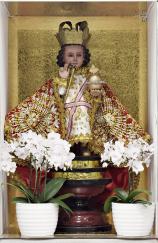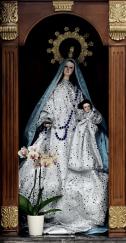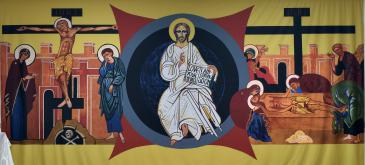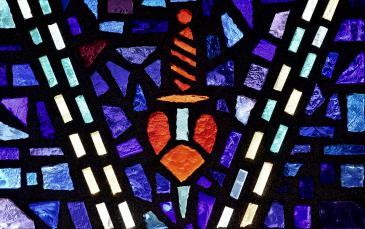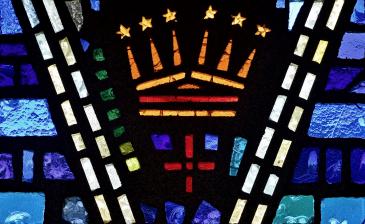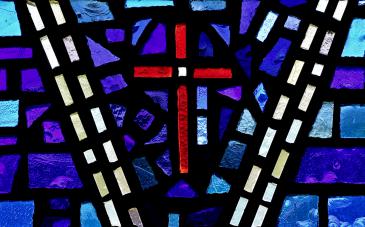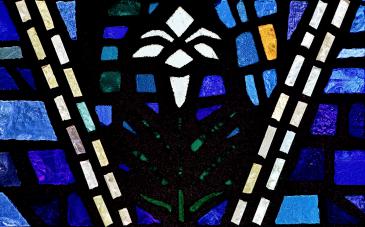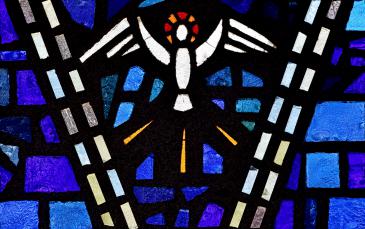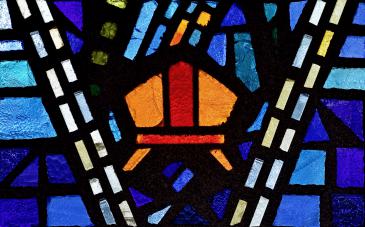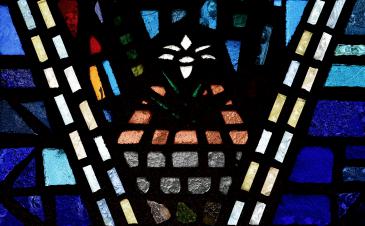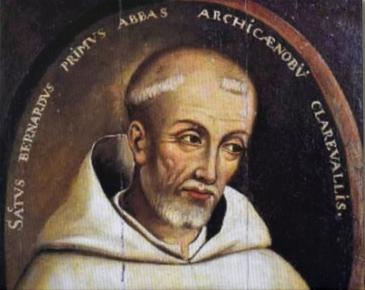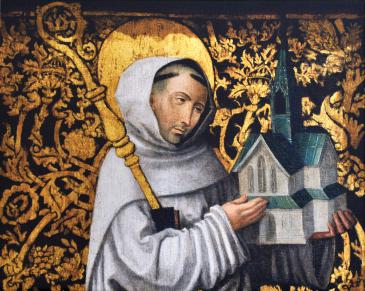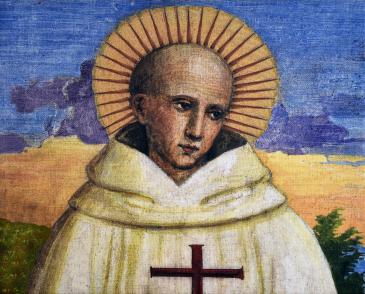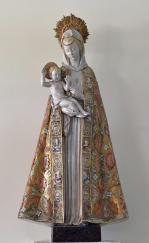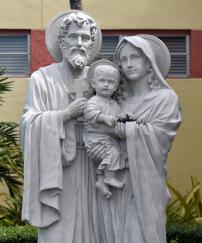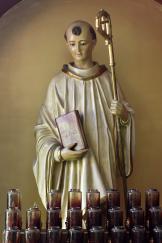By Jim Davis - Florida Catholic
Photography: Jim Davis
SUNRISE | Charming but forceful, mystical yet militant, St. Bernard of Clairvaux embodied opposites. His fusion of devotion and activism made him one of the most important churchmen of the Middle Ages.
As the founding abbot of a major monastery, Bernard preached, wrote and argued both for Church reform and for deeper personal spirituality. He denounced heretics, reconciled opponents, and urged everyone toward more loving relationships with God and Mary.
The future saint was born in a castle in France. His parents instilled in him a sense of justice, mercy and morality. He showed a taste for poetry and other literature, and in college he studied theology and scripture.
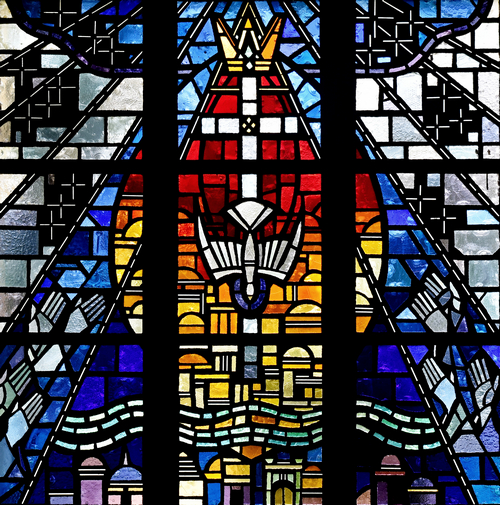
Photographer: Jim Davis | FC
God - symbolized as a crown for the Father, a cross for the Son, and a dove for the Holy Spirit - bring the New Jerusalem to Earth in this window at St. Bernard Church in Sunrise.
His mother’s death pushed Bernard toward the religious life, and he joined the strict Cistercian religious order – along with 30 other men, including four brothers.
After a few years, he led a dozen other monks to launch his own monastery, in a bleak, swampy area called the Valley of Wormwood. Soon the monastery grew to 130 monks.
In his ministry, Bernard used speaking skills and personal appeal as much as scriptural knowledge – talents that earned the nickname of Doctor Mellifluus, or “Honey-Sweet Doctor.” Crowds began flocking in pilgrimages to his monastery.
Even the monastery’s home was renamed – from Wormwood to Clairvaux, or “Clear Valley.”
Bernard was offered several bishops’ positions but declined them all, preferring his monastery. He remained its abbot for 38 years.
But during Church controversies in the wake of the first millennium, his eloquence often gained him a seat at ecclesial conferences. He was a confidant of five popes; in fact, Pope Eugenius III was an alumnus of Clairvaux.
After Pope Honorius II died in 1130, a dispute broke out over two men who claimed the right to be his successor. Because of Bernard’s influence, a council of bishops chose Innocent II as the next pope – a decision that avoided a churchwide split.
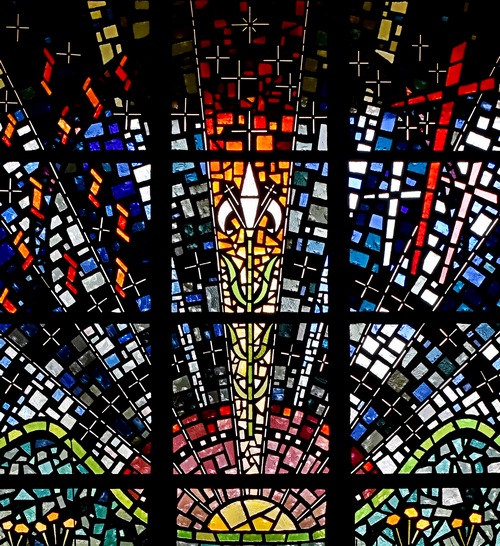
Photographer: Jim Davis | FC
A lily, symbolic of purity, dominates a window at St. Bernard Church in Sunrise. Also visible are the crosses of Calvary.
Bernard also championed orthodoxy in Europe. He opposed movements such as the Cathars and Waldensians, returning many to Catholic belief.
He even had a hand in founding the famed Knights Templar, writing their standards of conduct for service, piety and chivalry.
On the negative side, Bernard accepted an ill-fated appointment by Eugenius to promote the Second Crusade to the Holy Land. The abbot was criticized roundly after the failure of that Crusade, but Bernard blamed sins of the Crusaders themselves.
By the time of Bernard's death in 1153, Clairvaux had founded many other monasteries – estimates run upwards of 68. Bernard wrote more than 800 letters, essays and sermons, with themes of devotion to God, ministry to others, and service in churchly responsibilities.
His texts on loving and imitating Christ seem to rise into a realm of prayer and contemplation. In contrast to the ritualistic Christianity of the time, Bernard taught a personal faith in God, with Mary as Jesus’ “royal way” to humankind.
Especially admired were his sermons on the “Song of Songs,” an allegorical biblical book on God’s love for his people.
A favorite quote by Bernard: “Whence arises the love of God? From God. And what is the measure of this love? To love without measure.”
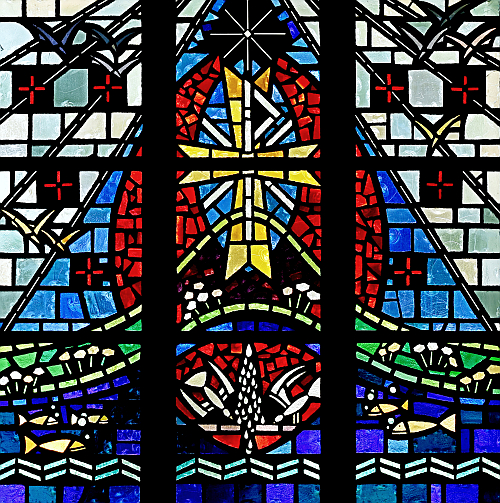
Photographer: Jim Davis | FC
A double symbol of Christ - a cross and a Chi-Rho - form the centerpiece of this window at St. Bernard Church in Sunrise. Chi and Rho are the first two letters of Christos, Greek for Christ. The cross is in gold for the presence of God and the Resurrection of Jesus.
Hymns attributed to Bernard – including O Sacred Head, Now Wounded and Jesus, the Very Thought of Thee – are published in Protestant hymnals as well as Catholic.
He was canonized in 1174, then named in 1830 as a Doctor of the Church, an authoritative source of Catholic teaching.
The Episcopal Diocese of Southeast Florida likewise honors the saint in a church in North Miami Beach. The Church of St. Bernard of Clairvaux is made of blocks from a 12th century Cistercian monastery built near Segovia, Spain.
Bernard’s honey-sweet style has made him the patron saint of bees, beekeepers and candlemakers. He's also the patron of places including Burgundy, Gibraltar, and the city of Binangonan in the Philippines.
He is honored, too, at a Catholic church in Sunrise. Founded in 1971, St. Bernard parish dedicated a church building in 1974 and a parish center in 1980.
As the church has grown and diversified, it has broadened its scope to Haitian and Filipino members. Parishioners have held Emmaus retreats for both men and women; some also meet in a Legion of Mary chapter.
Community outreaches include Respect Life and the Saint Vincent de Paul Society. The church is also a designated hurricane shelter.
